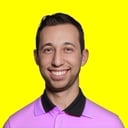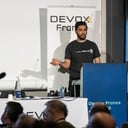Raise your hand if you've ever felt like your designer resume is disappearing into a black hole of job applications. 🙋♀️🙋♂️
Yeah, me too.
It's like trying to stand out in a sea of neon signs – everyone's flashing their skills, and it's hard to know who to focus on. It's enough to give you a headache.
But, you've gotta work and pay the bills and get the career you've been working so hard for, so how are you going to stand out from the crowd? Since you're reading this, you're obviously looking for ideas, so that's what we will talk about today.
First, some hard facts to set the scene.
Most importantly, the tech world is one of the most competitive industries in the world. I'm not saying this to scare you. Quite the opposite. Once you know how hard it is to get in, you can make the decision to go all and make it work.
Do whatever it takes. Not everyone will, so resolving to stick with it already puts you ahead of the pack.
Next, there's no shortage of talented designers vying for the same roles at those dream companies. Whatever kind of designer role you're going for. A whopping 76% of resumes get rejected before a human even lays eyes on them.
Ouch. That's a lot of wasted pixel-pushing.
So, let's get you out of the statistics and into a job with a product designer resume that grabs a recruiter's attention and screams, "I'm the designer you NEED, and here's why!"?
It's simple (but not easy): Your resume user needs to be more than a list of skills and job titles. It needs to be your personal branding masterpiece, your digital handshake that says, "I get tech, I get design, and I'm the missing piece of your puzzle."
Let's get into the guide and everything you need to know.
Design Thinking for Tech-Savvy Resumes: It's Not Just for Products, It's for Product Designer Resumes
https://www.youtube.com/watch?v=_WI3B54m6SU
Design Thinking.
Ah, yes, that fancy business everyone's been throwing around recently. As a product designer, you're probably familiar with the process: Empathy, Define, Ideate, Prototype, Test – you've probably used it to design apps, websites, and maybe even a revolutionary coffee mug.
But guess what? Design Thinking isn't just for products. It's the secret sauce for cooking up a resume that'll make recruiters drool. Here's how to apply it to your job hunt:
Empathy
First things first, put yourself in the recruiter's shoes.
They're sifting through mountains of resumes, their eyes glazing over from the endless "proficient in Adobe Creative Suite" claims.
What are their pain points? What kind of designer are they actually looking for? Creating user centered designs that cater to the recruiter's needs is crucial. Do your market research on the company, the team, and the specific role. The more you understand their needs, the better you can tailor your resume to fit.
Define
This is where you get crystal clear on your career goals. What kind of tech company do you want to work for? What kind of products do you want to design? Do you dream of designing the next big social media platform?
Or maybe you're passionate about creating intuitive healthcare apps that actually make a difference. Whatever it is, own it! Your resume should scream, "This is who I am, and this is where I belong."
Ideate
Now's the time to get creative. Forget the boring, one-size-fits-all resume templates. Brainstorm ways to showcase your skills and experience that align with the tech world. Maybe you create a mini-case study on your resume, highlighting a problem you solved and the impact it had.
Or perhaps you design a simple infographic that visually communicates your design process. The goal is to stand out and show off your unique design thinking in a way that's relevant to the tech industry.
Prototype
Think of your product designer resume as, well, a product you're designing. Experiment with different layouts, fonts, and visuals. Use white space strategically, highlight your most relevant skills, and make sure it's easy for recruiters to scan and find the information they need.
Don't be afraid to try something new – remember, you're a designer, not a robot.
Test
Before you unleash your resume on the world, get some feedback. Share it with other designers, tech professionals, and even recruiters if you can.
Ask for their honest opinions and suggestions. Are there any sections that are confusing? Is the design too busy? Does it accurately represent your skills and experience? Use their feedback to refine and improve your resume until it's ready to dazzle potential employers.
Remember, your resume is your first chance to make a killer impression in the tech world. By applying Design Thinking, you'll create a resume that not only looks good but also effectively communicates your value as a designer who understands the unique needs of the tech industry.
Beyond Static PDFs: Your Resume is a Tech Playground

The traditional resume is a sheet of paper you carry around with you from interview to interview, is looked over once by the hiring manager, and the rest continues. That way is dead, and a piece of paper resume simply won't cut it.
Instead, get innovative and get outside the box, using what's available as a way to showcase your skills and talents while also showing off your digital prowess. Here's how to turn your resume into a tech-forward masterpiece:
Interactive Resumes
Remember those "choose your own adventure" books you loved as a kid? Well, your resume can be the grown-up version. Sprinkle in some micro-interactions that let recruiters click, hover, or explore different sections.
Imagine a UI element that expands to reveal a project case study or a hover effect that showcases your visual design skills.
Interactive elements not only make your resume more engaging, but they also demonstrate your ability to create user-friendly experiences – a crucial skill for any tech designer. Many hiring managers appreciate resumes that are concise and easily scannable.
Data Visualization
Tech companies love data, so why not give them what they want? If you've got impressive stats to share – like how your design increased website traffic by 30% or boosted user engagement by 50% – don't just list them as bullet points.
Create visually appealing charts, graphs, or infographics for your job application that make your impact pop. This not only adds visual interest but also proves that you can communicate complex, relevant information in a clear and compelling way.
Online Portfolios
Your portfolio is your design playground, so make sure it's front and center on your resume. But don't settle for a generic link – create a custom landing page that's tailored to the specific job you're applying for.
Highlight projects that are relevant to the company's industry or showcase your expertise in a particular design niche.
Make it easy for recruiters to see your work and imagine how your skills could benefit their team via your resume summary.
Personal Websites
And finally, by far, one of the best ways to showcase your reputation online is with your own personal website. Whether you've got a knack for coding or using a website builder like Wix or WordPress, it's never been more important or easier to set up an online space you can call your own.
But don't forget to treat this like a product and get creative. Here are some concrete examples of what you're up against.

A portfolio website mock up found here.
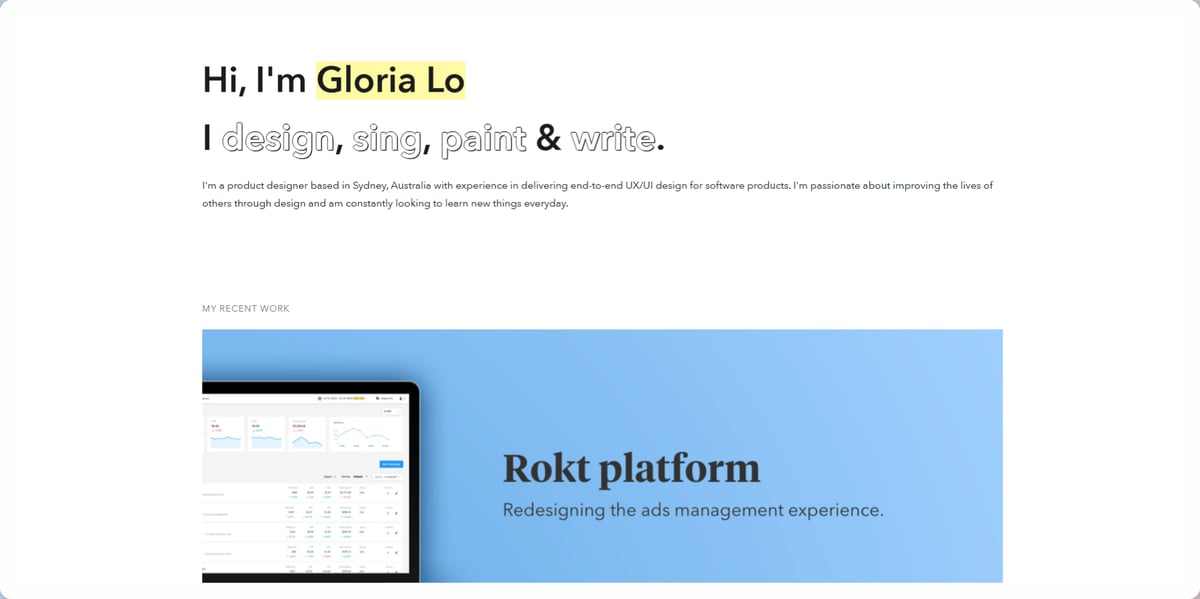
A beautiful user interface design by Gloria Lo, a perfect example of what a personal website should look and feel like, highlighting design skills while clearly being her own place.
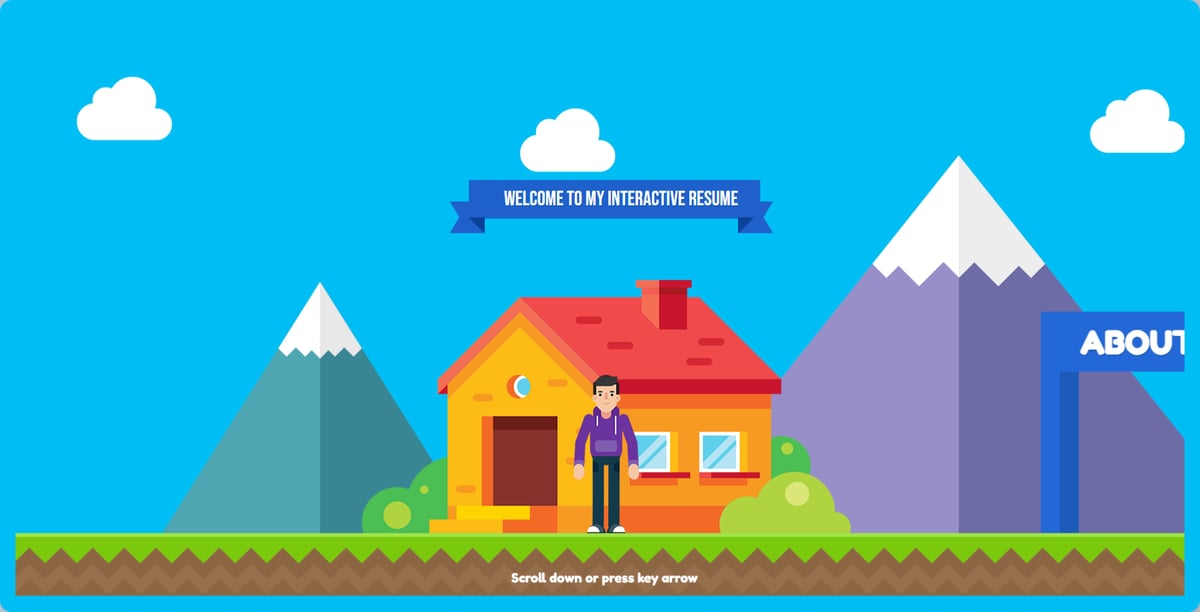
Salvatore Casalino's interactive personal resume summary that takes you on a fun and engaging journey through his career.
This guy even made a playable 8-bit game for his portfolio.
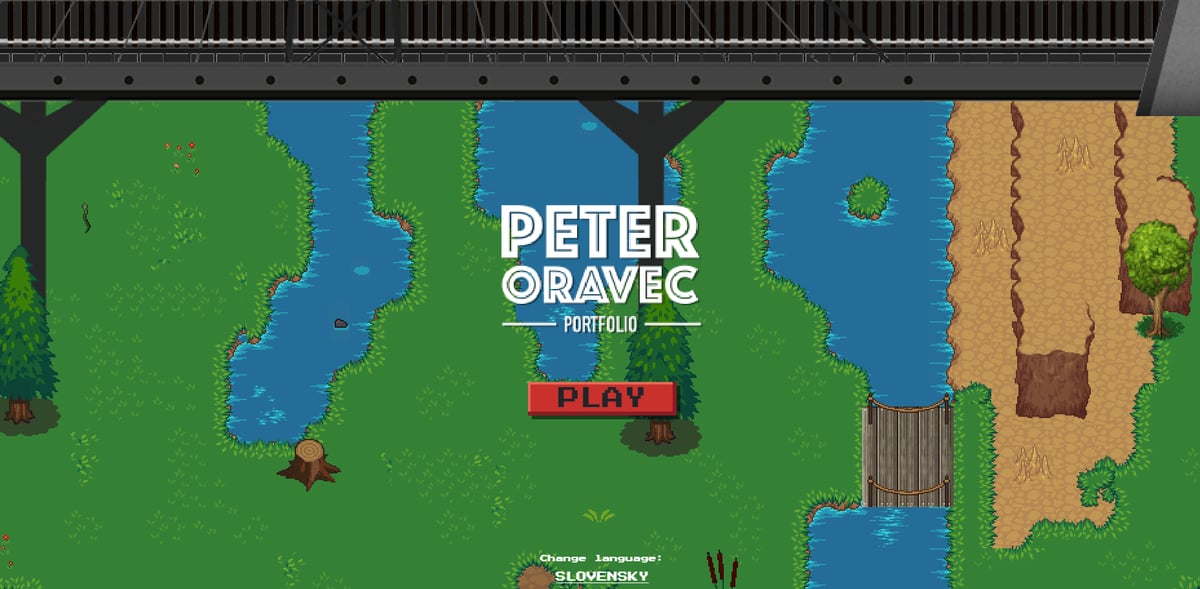
So yeah, lots of things to think about. As a final reminder, being a product designer is not so much what you can do, but how you do it.
By embracing technology and pushing the boundaries of traditional resume and cover letter design, you'll show recruiters that you're not just an interaction designer – you're a tech-savvy innovator who's ready to tackle the challenges of the digital age.
UX for Tech Recruiters and Hiring Managers: Your Resume as a Product
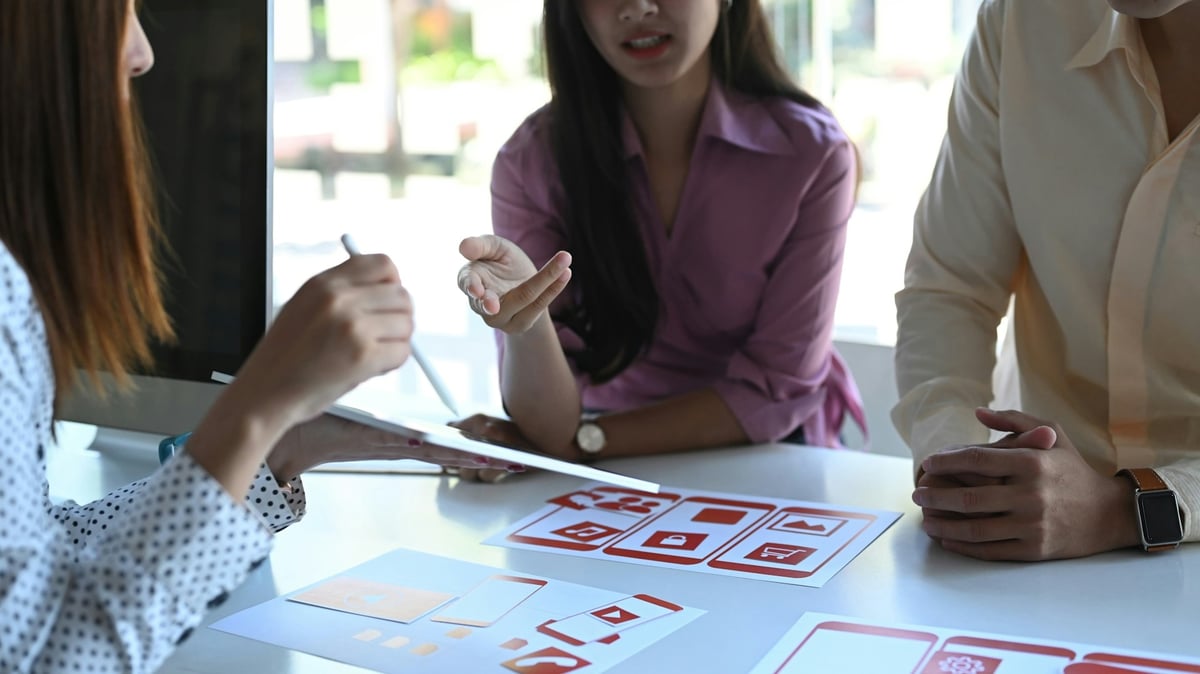
Tech recruiters aren't exactly known for their patience. Their inboxes are overflowing, and their attention spans are shorter than the TikTok videos they're binging on their lunch breaks.
That's why your resume needs to be more than just a pretty design – it needs to function like a well-oiled machine, guiding them seamlessly to the information they crave, all while holding their attention from start to finish.
Think of your resume as a product you're designing for a very specific user: the tech recruiter. Interaction designers can highlight their expertise and contributions to user experience and product design, showcasing their roles and affiliations with notable companies like Google.
Here's how to optimize their experience and make them fall in love with your "product":
- Information Architecture: Just like a well-designed app, your resume should have a clear and logical structure. Put your most relevant tech skills and projects front and center, like a featured product on an e-commerce site. Don't make them dig through a cluttered mess to find your gems.
- Visual Hierarchy: Use design principles to create a visual hierarchy that guides the recruiter's eye. Think of it as a roadmap for their attention – bold headings, clear section breaks, and strategic use of white space can make all the difference. Highlight your most impressive accomplishments, like glowing testimonials on a product page, so they stand out from the crowd.
- Mobile-First: Remember, recruiters are busy people. They might be reviewing your resume on their phone during their commute or while waiting in line for their oat milk latte. That's why it's crucial to make sure your resume is mobile-friendly. Use a responsive design that adapts to different screen sizes, and avoid tiny fonts or complex layouts that are difficult to read on smaller devices.
- Accessibility: In tech, accessibility is a big deal. It's not just about complying with regulations; it's about showing that you care about creating inclusive experiences for everyone. Make sure your resume is accessible to people with disabilities by using sufficient color contrast, clear fonts, and alternative text for images. Not only is this good design practice, but it also demonstrates your commitment to social responsibility.
Again, your resume is more than just a document – it's your digital handshake with potential employers. By approaching it with a UX mindset, you can create a resume that's not only visually appealing but also functional, intuitive, and enjoyable to "use."
And when you make the recruiter's life easier, you're one step closer to landing that dream tech job.
Quantifiable Impact: Speak the Language of Tech (Even If You're Not a Coder) by Highlighting Technical Skills

Let's be honest, tech companies are obsessed with numbers. They want to see cold, hard data that proves you're not just a design wizard but a results-driven magician. So, even if you're not fluent in JavaScript, it's time to start speaking the language of tech – the language of impact.
Metrics
Numbers don't lie, and they certainly impress. Instead of saying "improved user experience," say "increased user engagement by 40%." Don't just claim you "streamlined the design process" – quantify it with "reduced design iterations by 25%."
Look for ways to measure the impact of your work, and don't be shy about showcasing those numbers on your resume. Junior product designers should focus on highlighting their skills and tool proficiency.
Tech Stack
Tech recruiters love to see that you're not just a one-trick pony. List your proficiency with relevant software and tools, from design essentials like Figma and Sketch to prototyping tools like InVision and Axure. Clearly, listing technical skills is crucial.
If you have any experience with front-end development languages like HTML, CSS, or even JavaScript, flaunt it! The more versatile you are, the more valuable you'll be to a tech team.
Impact Statements
Don't just list your job responsibilities like a boring grocery list. Instead, craft impactful statements that highlight the results of your work and how you drive business growth.
For example, instead of saying "designed website layouts," say "designed website layouts that increased page views by 20% and reduced bounce rate by 15%." Show them that you don't just create pretty designs – you create designs that deliver tangible business results.
Keywords
Think of your resume as a search engine optimization (SEO) project. Research the job description and sprinkle in relevant keywords that recruiters will likely be searching for. If they're looking for a "user-centered designer," make sure that phrase appears in your resume.
If they want someone experienced in "agile methodologies," weave that term into your work experience descriptions. By using the right keywords, you'll increase the chances of your resume showing up in search results and getting noticed by the right people.
By quantifying your impact and speaking their language, you'll show them that you're not just a creative artist – you're a strategic thinker who understands how design can drive business success.
And that's a combination that's hard to resist.
Tailoring for Tech Subfields: Highlighting Relevant Skills, One Size Doesn't Fit All
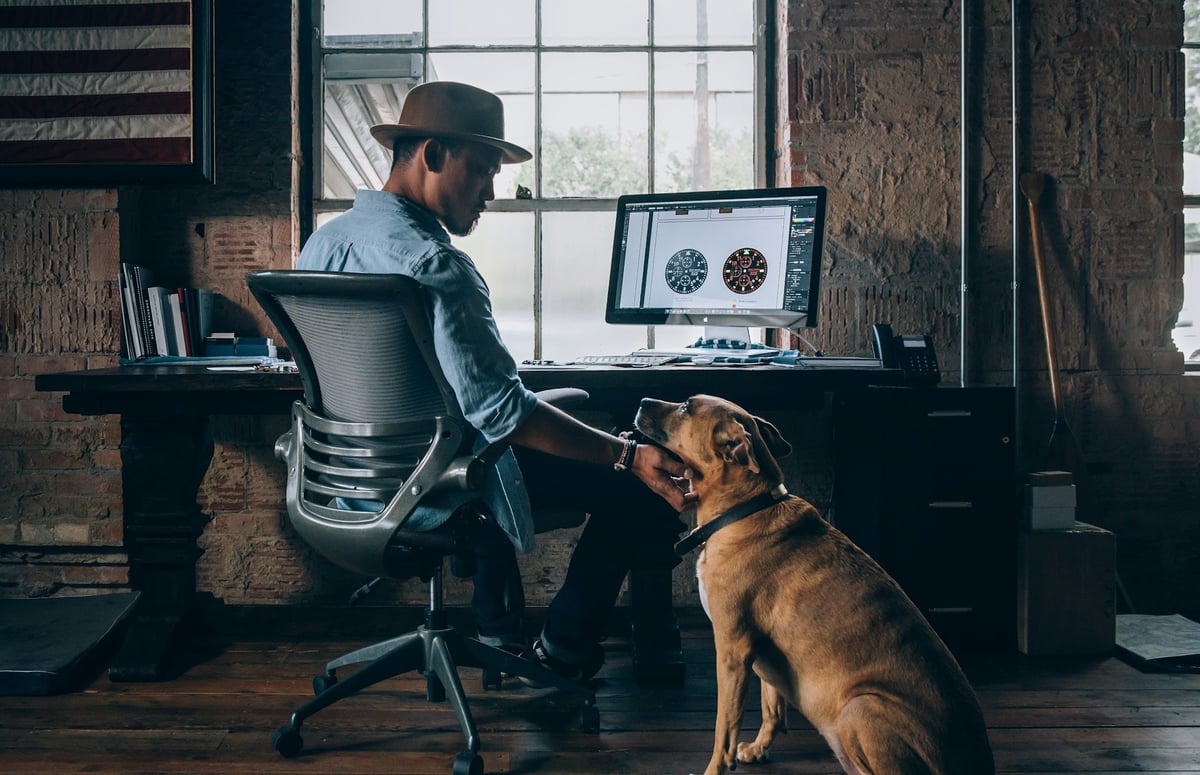
Okay, "designer" is a pretty broad term. There's a whole universe of specializations, each with its own unique skill set and focus. Your resume needs to reflect this. It's time to ditch the generic "designer" label and step into your niche.
Here's a quick cheat sheet to help you tailor your resume to specific tech design roles:
UX Designer
You're the champion of the user. Your resume should scream "empathy" and "problem-solving." Highlight your experience with user research, creating user personas, conducting usability testing, and designing wireframes and prototypes.
Emphasize the importance of showcasing key skills. Mention the importance of user testing in validating design solutions. Show them you're not just making things look pretty – you're creating intuitive experiences that users love.
UI Designer
You're the visual storyteller. Your resume should be a feast for the eyes, showcasing your mastery of color, typography, and layout. Emphasize your ability to create visually stunning interfaces that are both functional and delightful. Highlight the importance of user interface projects.
Mention your experience with design systems, iconography, and animation. Emphasize the importance of user interface design skills. Let them see that you can turn complex information into beautiful and intuitive designs.
Product Designer
You're the big-picture thinker. Your resume should reflect your holistic understanding of the product development process. Highlight your ability to collaborate with cross-functional teams, from engineers to marketers.
Mention the importance of a well-crafted product designer resume. Showcase your experience with product strategy, user flows, and information architecture. Let them know that you can see the forest and the trees, and you're ready to drive the entire product design process from concept to launch.
No matter what your specialty, the key is to tailor your resume to the specific role you're applying for. Research the company, understand its product or service, and highlight the skills and experience most relevant to their needs.
Don't forget other skills like perhaps a degree in fine arts you have, your communication skills and team experience, and other key points.
In tech, specialization is key. By tailoring your resume to your chosen niche, you'll show potential employers that you're not just a jack-of-all-trades – you're a master of your craft, ready to make a real impact in their specific area of need.
Wrapping It Up
Your designer resume isn't just a document; it's your first impression of the tech world. Make it unforgettable by blending your design prowess with the insights we've shared. But if you're looking for an extra edge, let Mentorcruise guide you.
Our experienced product designers are ready to help you craft the perfect resume, navigate the job search, and propel your career growth. Don't just apply for jobs; design your future with Mentorcruise.




